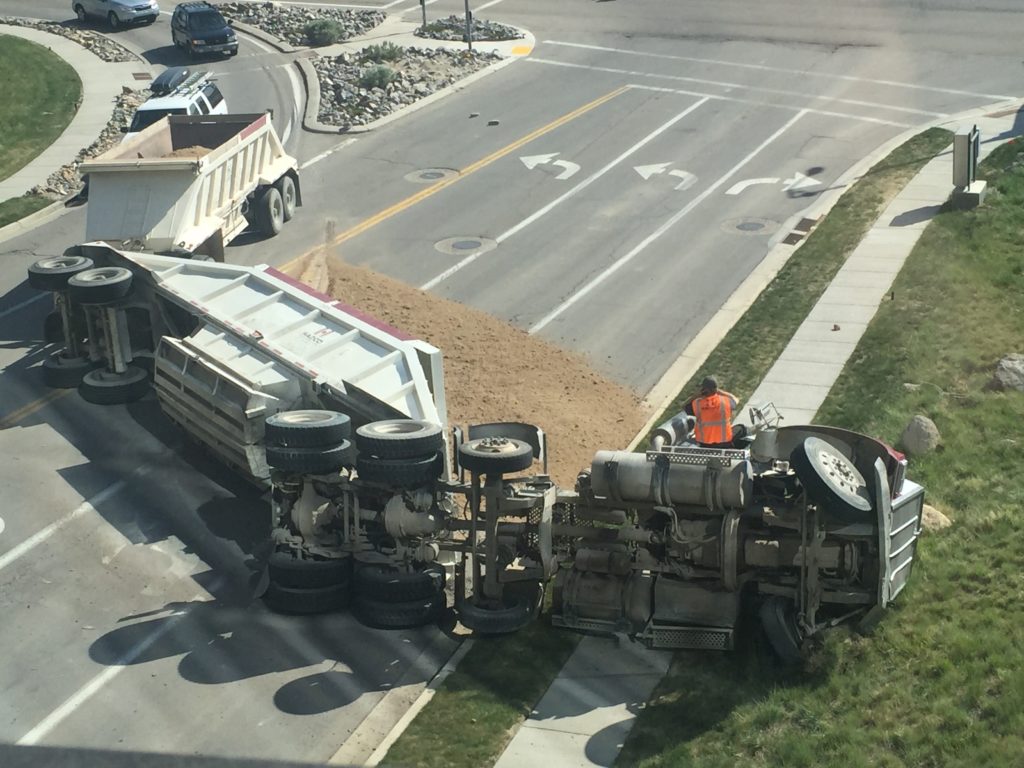
On May 31st, 2019 Illinois joined 10 other states in officially making the decision to legalize recreational marijuana. The decision promises to provide a major financial boost to the state, bringing in roughly $800 million to $1 billion a year in taxes. With the potential for great financial gain, many have seen the new law as a win for the state of Illinois. While the new law does bring great economic potential, it’s important to remember it may have a variety of ramifications for those in several industries throughout the state.
As we previously touched on regarding truck driver impairment and the necessary precautions that must be taken with drug use on the rise in the United States, the legalization of marijuana does pose a threat to the truck driving industry. Just like any other driver on the road, an individual who is impaired via the use of marijuana should never get behind the wheel of a vehicle. Similar to alcohol consumption, the drug delays an individuals’ reaction time and ultimately impairs their judgement. Now pair those adverse effects with a truck driver who has been behind the wheel for up to 14 hours at a time, and this is a recipe for disaster. Unfortunately, the reality of the situation is that marijuana use amongst truck drivers has become far more prevalent, with positive marijuana tests among truck drivers increasing 4% year over year to 2.6% for the federally mandated drug testing that drivers must undergo. While that number may appear small, it is an increase, nevertheless. More importantly, we must keep in mind that although the positive test rate remains in the single digits, it is absolutely unacceptable to have drivers on the road who participate in any sort of recreational drug or alcohol use.
Unfortunately, driver impairment is not the only issue that residents of Illinois need to be considering since the new law has been passed. Over the last decade, there appears to be a new report circulated each year that warns of the truck industry being in dire need of more professionals due to the small pool of drivers to choose from. We even wrote an article on how aging truck drivers are a factor in this exact issue. With Illinois legalizing recreational marijuana and with more states following suit, the driver pool throughout the United States and Illinois will be affected. Heavy Duty Trucking wrote an article in 2018 exploring this topic in further detail and noted that “in an industry facing a driver shortage, legal use of cannabis may cut into the available driver pool. Some drivers could even consume edible cannabis unawares and fail a pre-employment drug test.” The article also cites a study conducted by the Insurance Institute for Highway Safety and the Highway Loss Data Institute, which found that in the “first states to legalize the sale of recreational marijuana, there has been a 5.2% increase in crashes.” The hope is that any time a substance is legalized, no accidents occur as a result of such substance abuse; however, while that is clearly wishful thinking, there are steps that can be taken to make certain that such drivers using marijuana are not allowed on the road.
Safety Precautions Must Be Taken to Increase Road Safety
In March of 2019, the American Transportation Research Institute (ATRI) produced a manual, Marijuana Legalization and Impaired Driving: Solutions for Protecting our Roadways, with the goal of providing useful tips on maintaining safe roads. One of the key points of note throughout the manual is the fact that it acknowledges that drug testing for marijuana is not the same as testing for blood alcohol content. The manual goes on to provide several reasons as to exactly why drug testing for marijuana is currently not a viable option to truly see if an individual has been driving under the influence of the drug:
- Unlike alcohol, where impairment level is easily predicted by BAC, the severity of impairment resulting from marijuana use depends on a number of factors, including the frequency of marijuana use and consumption method. While higher doses of marijuana often result in greater impairment, this relationship is less predictable than that of alcohol and impairment.
- Peak subjective marijuana impairment does not coincide with peak THC blood concentrations.
- THC deteriorates rapidly in the user’s blood.
- Low levels of THC in a user’s blood are not necessarily indicative of recent use.
As established by the Federal Motor Carrier Safety Administration (FMCSA) under CFR § 382, commercial truck drivers must be tested for controlled substances and alcohol use. However, it is only mandatory that a urine test be taken, not a hair analysis which has proven to be far more accurate when testing for specific drugs other than alcohol.
Moving Forward with Legalization
Unfortunately, as the federally mandated drug testing appears to be behind the curve when it comes to accurately finding whether a driver is under the influence of the drug, it appears that one of the best measures that can be taken to ensuring such drivers stay off the road for good is not only requesting that a hair analysis become a part of the federally mandated testing, but that transportation and law enforcement officials begin collecting data immediately on such drivers involved in unfortunate crashes. For example, Transport Topics cited another study conducted by ATRI, which quoted that “whether or not the federal government recognizes the legality of marijuana, it should take the lead on related federal data collection programs; . . . key to this role is identifying and conveying standards for state – and local – level data collection by law enforcement and the criminal justice system.” While this clearly appears to be a quick fix approach to driver impairment, it may be the best way to curb the increase in truck driver’s driving under the influence as more states continue legalizing marijuana. As a state, we must make certain that the public remains safe, and advocating for increased measures to keep drivers who will abuse drugs and alcohol off the roads should be something we are all for.




